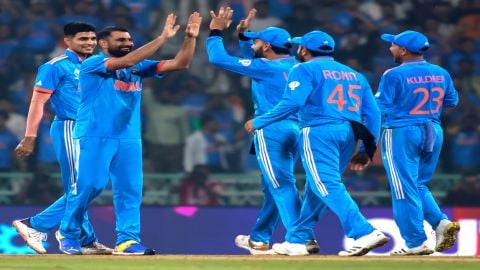
Indian bowlers prove their worth under pressure (ASHIS RAY FROM LUCKNOW) (Image Source: IANS)
ICC ODI World Cup: If India win the 2023 ICC ODI World Cup, it will be because of the broad spectrum composition and incisiveness of their bowling.
When the batting fails -- as the best of line-ups occasionally do -- bowlers are called upon to rescue the circumstances. This is precisely what India’s leather merchants did as they sent England -- who must have entertained hopes of upsetting India after restricting them to 229/9 -- packing by bundling them out for a paltry 129 inside 35 overs.
Thus, in course of nine meetings between the two countries in the 48-year history of the World Cup, both teams have now won four matches apiece while the encounter in the 2011 edition had ended in a tie.

